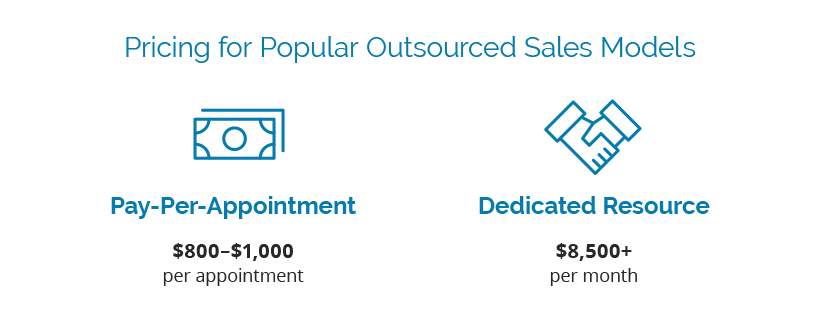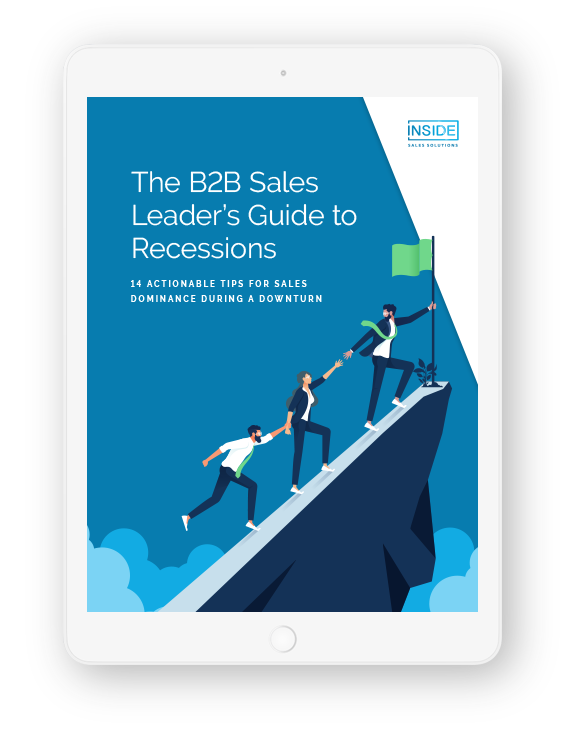There’s a common misconception among the corporate world that outsourcing sales development requires giving up control. For the most part, businesses are starting to realize that outsourcing actually frees their internal sales team to focus on closing more deals.
But how much does it actually cost to gain that freedom? Do companies have to pay a premium for this benefit, or can it also be the less expensive option?
On the surface, it usually looks like hiring an outside team is expensive. But hiring a team to handle parts of your sales process has many financial advantages.
Deciding whether to outsource part of your sales function should be based on several factors – things like the stage of business you’re in, the length of your sales cycle, deal size, and more. But, when deciding, the investment required is perhaps the biggest factor impacting the decision.
The key to deciding whether outsourcing is the wisest fiscal choice for your organization is making an accurate comparison between the costs associated with internal and outsourced sales development teams. It’s not exactly apples to apples.
So, let’s dissect what it actually costs to build an internal team vs what it costs to hire an external one.
Get the Ultimate Guide to Maximizing Channel Sales
What does an internal sales team really cost?
If you’re deciding whether or not to build (or maintain) your internal team or outsource to meet your goals, the first thing you need to understand is what it will cost to support your internal team. Most forget that the cost of an internal team is more than just their base salary.
The final number should be inclusive of everything from your data management tools to your company’s benefits. Not surprisingly, these costs can add up fast.
Here’s a short list of investments you might need to make (or upgrade) to maintain an internal sales team.
- Insurance and retirement benefits
- Supervision and management personnel
- Bonus and commission structures
- Technology stack subscriptions and limits
On top of these investments, planning and executing these things also costs time and money. Make sure to add all of this up before settling on a final number.
A typical breakdown could look something like this:

Even if this number turns out to be something you can afford, there are reasons an internal sales team might not be the right investment to make. Often, SDRs use their position as a stepping stone to another career. That means turnover can be high and you might also find yourself with a continual investment in recruitment to keep your team operating at full capacity.
With that in mind, let’s take a look at how outsourced teams compare.
How much does outsourcing cost for sales development?
There are several different kinds of outsourced sales approaches: performance-based models, dedicated models, and combination approaches that help you dial-in your efforts.
The great news is that hiring an outsourced solution allows you to choose exactly the kind of expertise you need to meet your objectives. The bad news is that understanding how they charge becomes a little bit more difficult.
But in general, pricing often depends on:
- How many reps you’ll have
- Which industry you’re in
- What the sales process looks like
- Your geographic area
- Your goals and timeframe
While pricing can vary significantly based on those factors, here’s what you can expect to pay for two of the most popular approaches when working with a high-quality sales development partner:
Pay-Per-Appointment
A good rate per appointment from a reputable, qualified, US-based provider is around $800-$1,000. Good partners will only charge for appointments that are kept and will ensure those appointments are made with qualified leads.
Dedicated Resource
A solid dedicated resource model usually starts around $8,500 per month. The rates can go up from there based on factors such as team size and whether or not you need a team manager.

There’s one thing to be aware of when considering your options: If you get an exact quote from a vendor right away, you’ll probably get hit with additional charges and fees later. Plus, this pricing approach could indicate that the company won’t represent your brand well and/or isn’t equipped to deliver the sales performance you are looking for.
How do you choose between internal or outsourced sales development?
At the end of the day, the investment you make is up to you. Remember those factors from the beginning of the article? The stage of business you are in probably plays the biggest role. For example, if you’re at the beginning of your business — with more questions than answers — an internal team will bring the most value.
If you’re not, it will likely be much easier, much more efficient, and more affordable to get an outsourced agency up and running. Most companies have a defined process around onboarding and ramping a team. When all is said and done, outsourcing is typically a better value for your money, producing better results than what you could get on your own.
The best thing you can do to ensure you get the most value for your dollar is to hire the right partner. Make sure you select one that’s focused on aligning with your goals rather than simply relying on a low initial price quote. While the right outsourced sales partner is often a wise investment, a partner who cares more about the revenue they generate more than the revenue they generate for you seldomly is.
Considering Outsourced Sales Development?
Take a peak at how B2B sales teams can overcome economic uncertainty.


